New and disruptive realities are transforming consumer expectations and corporate commitments to sustainable packaging. Organizations can achieve or comply with — and report their efforts on — sustainability in packaging through different means and approaches, but companies need to be proactive in identifying actionable, scalable improvements in their own business or operations. Data and analytics can help in providing full visibility and granularity in their supply and value chains as well as reinforcing the credibility of their sustainability initiatives.
Packaging wraps up every kind of product under the sun, from essentials like food to leisure items like toys. The amount of packaging waste we have produced as a consequence, however, can wrap around the planet many times over. In a 2022 report by the Organisation for Economic Co-operation and Development (OECD), plastic waste generated globally reached 353 million tons in 2019, two-thirds of which had lifetimes of less than five years. Packaging waste accounted for 40%, about 94 million tons.
Addressing unsustainable packaging has been an integral part of the UN’s Sustainable Development Goals. Governments and companies have since pledged targets for reuse, recycling, or composting of packaging, with multinational companies like The Coca-Cola Company, Unilever, and Walmart aiming to meet goals by 2025. Let’s take a look at how initiatives are doing, what current roadblocks are, and how to overcome them.
The costs of unsustainable packaging
Changes to traditional packaging have allowed businesses to scale, whether it’s a small crafts shop that ships out handmade crafts to a wider area or a large company distributing hygiene and cleaning products across regions. It has allowed the extension of shelf lives of food and protection of fragile gadgets. However, the rise in accessibility, convenience, and consumerism also came with a price — a wave of packaging waste.
This price is at the cost of people, the environment, and even economic opportunities. The importance of packaging in sustainability goals is embodied by the United Nations’ SDG 12: Responsible Consumption and Production. However, the effects of unsustainable packaging extend to other aspects of sustainability.
-
Economic value: When plastic packaging is single-use and mismanaged as waste, an estimated US$80 billion to US$120 billion a year is lost to the economy.
-
Pollution: Common materials for packaging make up a third of global waste — paper and cardboard make up 17% while plastic accounted for 12%. Recycling efforts have seen improvements in paper packaging in the US and the EU, but most of plastic packaging still ends up in landfills or as unregulated waste.
-
Greenhouse gas emissions: Single-use plastics used in packaging are still primarily made from fossil fuel or “virgin” feedstock.
-
Biodiversity threats: Millions of tons of plastic are released into the sea every year. Plastic bags and food containers have been documented trapping marine life and microplastics have been ingested by fish and whales.
-
Human health: Microplastics from food packaging have raised concerns after they were found in human organs and even placenta.
Tackling unsustainable packaging will need to be multifaceted. So, what does sustainable packaging entail?
What is sustainable packaging?
Companies have used a variety of phrases to indicate that they are doing their part in sustainability. Vague labels like “eco-friendly” or “environment-friendly,” “all natural” and “recycled” were used to signal to consumers that the wrappers and containers will cause no harm. The term sustainable packaging needs to be unpacked as well.
The Sustainable Packaging Coalition provided criteria for packaging to be considered sustainable:
-
Is beneficial, safe, and healthy for people and communities throughout its life cycle
-
Meets market criteria for performance and cost
-
Uses renewable energy to harvest or create source materials and to manufacture, transport, and recycle the packaging product
-
Uses as much of renewable or recycled materials
-
Is manufactured using clean production technologies and best practices
-
Is made from materials healthy throughout the life cycle
-
Is physically designed to optimize materials and energy
-
Is effectively recovered and utilized in biological and/or industrial closed loop cycles
Other definitions of sustainable packaging share principles specified by the Sustainable Packaging Coalition. One of these is the necessity to reduce negative impact across the value and supply chains and throughout the packaging life cycle. This means, for example, that energy and water usage during manufacturing and recycling contribute to goals. Another is the move to a closed-loop cycle, which is complemented by increased recycling/recyclability and use of recycled content.
In order for companies to achieve sustainable packaging, it will not be enough that they use recyclable or compostable materials. It is a good start, but current and upcoming regulations will soon require businesses to account for all the external costs of packaging waste.
Sustainability packaging labels
Manufacturers of packaging, companies that use packaging, and consumers need to understand environmental claims and labels to make the right purchasing decisions and choices. Most businesses and consumers are already familiar with the green arrows symbol. As sustainability gained ground, more types of eco-labels have been established.
The International Standards Organization released the ISO 14020 family of standards for environmental claims and labels. The standards cover three types:
-
Type I eco-labels (third-party issued): These labels are issued by public or private bodies that set criteria for environmental claims about a specific product category. Businesses apply and provide documentation that they meet the criteria and perform above average or excellent.
-
Type II eco-label (self-declared environmental claims): ISO 14021:2016 provides guidance for the use of the Mobius cycle/strip and definitions for terms such as “recycled content,” “recyclable,” “compostable,” and “recovered material.” This symbol is internationally recognized, but care must be taken in its use.
-
Type III eco-label (environmental product declaration): Environmental product declarations (EPDs) are quantifiable information about a product life cycle based on a life cycle assessment (LCA). These don’t evaluate specific product properties and no certificate is issued. They are primarily useful for businesses looking for manufacturers or other businesses that will fit their sustainability goals.
ISO standards apply to most products, but there are also several eco-labels that focus on packaging. Paper packaging can be certified for being sustainably sourced from forests, having been made of recycled paper or being designed for industrial recycling/composting. Water reduction is another specific area that packaging companies can make environmental claims on.
Below are a few examples of eco-labels and environmental claims. Knowing which ones to certify for or put on packaging will help businesses avoid greenwashing or choose the right packaging supplier. Consumers also benefit by being able to pick products that align with their values and knowing how to sort and treat packaging waste.
 |
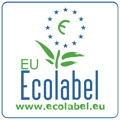
|
| Blauer Angel (Blue Angel) | EU Ecolabel |
|
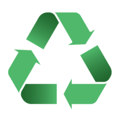 |
|
| Recyclable (ISO 14021:2016) | Percentage of recycled content (ISO 14021:2016) |
|
|
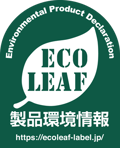 |
| International EPD System | EcoLeaf (Japan) |
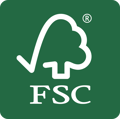
|
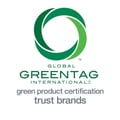
|
| Forest Stewardship Council (FSC) Certification | Global GreenTag |
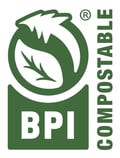
|

|
| Biodegradable Products Institute | ISCC |

|
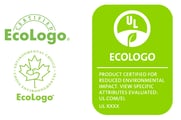
|
| Green Dot | Ecologo |
Achieving sustainability in packaging with analytics
Advancements in digital technology such as AI and the ubiquity of data are making it more commercially and technically feasible to design, develop, and implement more sustainable packaging systems for businesses. A food and delivery packing system company, for instance, is using consumer data and machine learning to forecast the need or demand of their partners for containers. They help automate and optimize their processes for logistics, which, in turn, maximizes the utilization of packaging materials and thus lowers environmental footprint. The everyday consumers benefit because there’s less trash, while their partners lower the costs for packaging. It also led their team to redesign and add new types of packaging.
Data and analytics plays the vital role of enabling businesses to embed sustainability in their packaging, including:
-
Better understanding the type of packaging used.
-
Assessing compliance of each packaging material and component with recycled content requirements and bans.
-
Knowing how much packaging material is used to package a product, and if they’re compatible with recycling systems.
-
Measuring metrics and KPIs for compliance (e.g., weight and percentage of each material used, their characteristics, where they were sourced, virgin and recycled plastic).
-
Gaining visibility on the packaging process across the supply chain.
Lingaro Group provides end-to-end data intelligence that enables enterprises to achieve sustainability and improve the triple bottom line. Lingaro’s supply chain analytics practice works with global brands and enterprises in strategically utilizing data and modern technologies to realize sustainability goals and comply with regulations in ESG reporting. Backed by industry-recognized expertise and powered by AI, Lingaro helps organizations optimize business processes, identify opportunities for improving operations, and mitigate environmental, economic, and social risks in their supply and value chains.



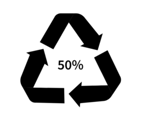

.png)



